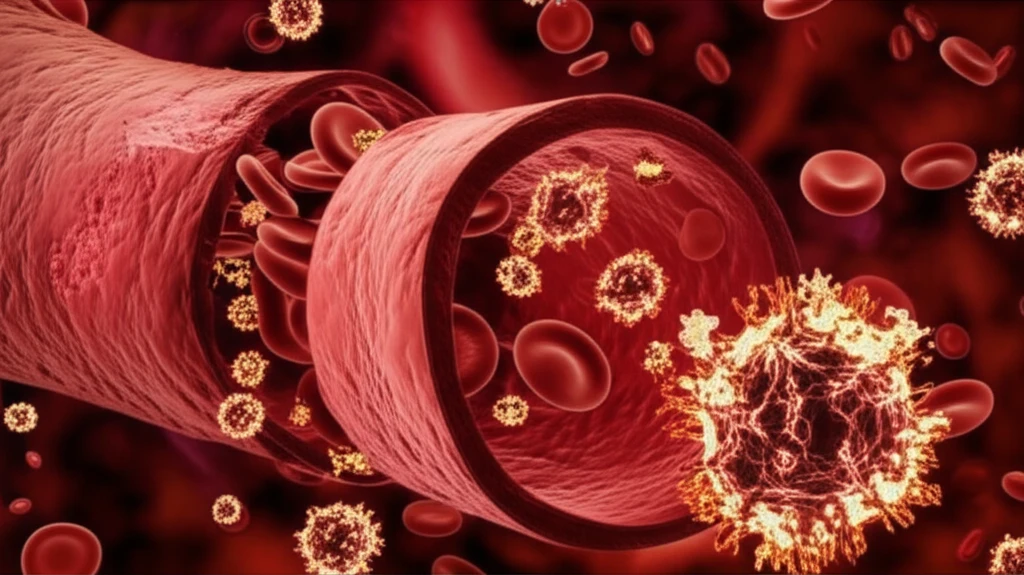
Traumatic Deep Vein Thrombosis: Spotting the Silent Threat Early
"New research identifies key inflammatory markers for early DVT diagnosis, potentially improving outcomes after trauma."
Deep vein thrombosis (DVT), a condition where blood clots form in the deep veins, poses a significant threat, especially following traumatic injuries. If left untreated, DVT can lead to serious complications like pulmonary embolism, amputation, and even death. Recognizing and preventing DVT early is, therefore, critical for improving patient outcomes and reducing mortality rates.
Traditionally, DVT diagnosis relies on invasive and costly procedures, often delaying intervention until the condition has progressed significantly. Recent research has shifted focus to the role of inflammation in DVT development, highlighting the involvement of inflammatory cytokines like interleukin (IL)-17. This discovery opens new avenues for early detection and targeted therapies.
This article explores a study investigating the potential of IL-17 as an early diagnostic marker for traumatic DVT. By examining its expression patterns and relationship with the fibrinolytic system, the research aims to provide insights into the mechanisms driving DVT formation and identify opportunities for timely intervention, offering hope for improved post-traumatic care.
IL-17: The Key to Early DVT Detection?

The study constructed a rat model of DVT to investigate the role of IL-17. Researchers analyzed blood and tissue samples at different time points after the trauma, focusing on IL-17 expression and its impact on the balance between tissue plasminogen activator (t-PA) and plasminogen activator inhibitor-1 (PAI-1)—key components of the fibrinolytic system responsible for dissolving blood clots.
- Early Elevation: IL-17 levels surge in the initial hours post-trauma.
- Fibrinolytic Imbalance: IL-17 appears to disrupt the t-PA/PAI-1 balance, promoting clot formation.
- Correlation: High IL-17 levels are linked to a greater risk of DVT.
The Future of DVT Prevention: Targeting Inflammation
This research highlights the potential of IL-17 as an early biomarker for traumatic DVT, offering a promising avenue for improved diagnosis and prevention strategies. By identifying individuals at high risk based on their IL-17 levels, clinicians can implement targeted interventions to restore the balance in the fibrinolytic system and prevent clot formation.
While further clinical studies are needed to validate these findings in human populations, the results suggest that anti-inflammatory therapies targeting IL-17 could play a crucial role in reducing the incidence and severity of traumatic DVT. This approach could significantly improve outcomes for patients recovering from traumatic injuries.
The study underscores the importance of considering inflammation in the pathogenesis of DVT and opens new avenues for research into innovative diagnostic and therapeutic strategies. By understanding the intricate interplay between inflammation and thrombosis, we can pave the way for more effective prevention and treatment of this potentially life-threatening condition.
